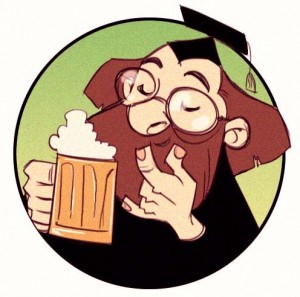 When I do beer education sessions, I frequently make an effort to find out what beer the students/clients currently drink. I subsequently craft my choices based upon where they are, finding beer that will edge them into the big, broad world of craft beer. In other words I start with more modest and “accessible” options so that I don’t overwhelm their palate and/or scare them off.
When I do beer education sessions, I frequently make an effort to find out what beer the students/clients currently drink. I subsequently craft my choices based upon where they are, finding beer that will edge them into the big, broad world of craft beer. In other words I start with more modest and “accessible” options so that I don’t overwhelm their palate and/or scare them off.
This, of course, is a basic beer education principle. And it is also only a rough guide, as often people will surprise me, such as recently a man who only drank Budweiser before the event but absolutely loved the sour beer put on offer. Go figure.
I have decided in my Beer 101 column over at the Sherbrooke Liquor website to offer up some ideas for how to edge a friend into the world of craft beer. It is similar to the series I ran in the summer over at Planet S/Prairie Dog, but it will be a little more comprehensive and offers a broader range of options (not being limited to Saskatchewan’s inventory).
The first part of the series, which you can read here, takes the first steps, moving from standard macro-brews to light-bodied, all-malt craft beer. The move to a craft-oriented pale lager is rather straightforward, with a number of decent examples. I highlight four possibilities, including Yellowhead or Ribstone Creek as local options. Similarly simple is the shift from one of the faux-white beer (ahem, Keith’s White, ahem) to a real witbier. It is a straight out swap from a sub-standard interpretation to a real one, like Hoegaarden or Blanche de Chambly.
A bit more complicated is what to do with someone who drinks Stella Artois, Heineken or another so-called “premium” European lager. Not to be bratty, but it is hard to find a craft version of skunked beer – which those green-bottled beer often are. More seriously, they are slightly fuller in their body, and so a straight flip to a craft pale lager might not be quite enough for them. In those cases I lean towards a European pale lager in the German or Czech tradition. They have a more rounded character with a bit of hop bite that will seem closer to the macro European beer.
The final step in the first installment is to edge your lager-drinking friend into the world of ales. A nice cream ale or blonde ale will introduce the light fruity esters found in ales with confusing them with other flavours. As an added bonus it will dispel any of those common myths such as “ales are dark, lagers are pale”.
In the coming months I will look at the subsequent steps, into darker beer and then onto bitter beer and those other wacky offerings in the craft beer world.

Leave a Reply